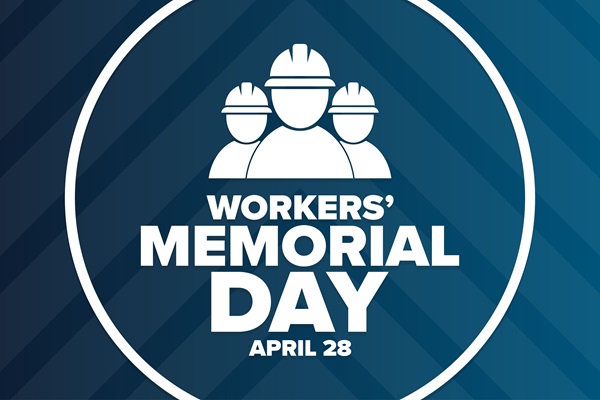
Construction workers face significant risks on the job, with a much higher likelihood of serious injuries than other industries. Construction workers are three times more likely to die in work-related accidents and twice as likely to sustain injuries, according to EHS Daily.
To combat these dangers, many construction companies are turning to advanced technology to improve worker safety and reduce accidents. But how does this technology work? What more can be done to prevent construction accidents? And if you’ve been injured, what legal options do you have?
A New York City construction accident attorney at Pasternack Tilker Ziegler Walsh Stanton & Romano, LLP explains everything you need to know to stay informed and protected.
High-Tech Devices Are Revolutionizing Construction Site Safety
Construction companies increasingly rely on high-tech safety measures to prevent accidents and protect workers from serious injuries. These cutting-edge devices provide real-time data, enabling construction workers and supervisors to respond quickly to dangerous conditions and avoid potentially life-threatening situations.
For example, wearable sensors now track critical health metrics like body temperature and heart rate, helping prevent issues like heat exhaustion or hypothermia. This technology is especially critical in extreme weather conditions, allowing workers and employers to act immediately when early warning signs appear.
Other advanced safety technologies being used on construction sites include:
- Cameras: Installed around the site to monitor and alert supervisors of unsafe conditions.
- Laser Scanners: Used to map construction site conditions in real-time, identifying potential hazards before they become accidents.
- Data Collection Software: Analyzes site data to pinpoint dangerous areas or situations, helping workers avoid them.
- Augmented Reality (AR) & Artificial Intelligence (AI): These programs can predict and highlight hazardous situations before they occur, allowing workers to take proactive safety measures.
“By combining these technologies, with sensors calculating the distance while cameras improve visibility, especially in low-light conditions, detection capabilities can be greatly enhanced,” EHS reported.
The Latest Tech Tools Enhancing Construction Site Safety
From drones to robotics, these advancements are helping to minimize risks and prevent construction accidents. Some of the most effective technological safety devices in use today include:
- Drones: These provide aerial inspections and real-time monitoring, allowing supervisors to identify hazards in hard-to-reach or dangerous areas without putting workers at risk.
- Building Information Modeling (BIM): BIM creates 3D models of projects, allowing construction teams to identify potential hazards before construction begins and ensuring safer planning throughout the project.
- Robotic Equipment: Automated machines like bricklayers and demolition robots can perform high-risk or repetitive tasks, keeping workers out of hazardous situations and reducing the risk of injury.
- Mobile Safety Apps: These apps enable safety managers to track and report hazards, conduct inspections, and ensure that all workers follow safety regulations in real-time.
- Proximity Sensors & RFID Tags: These technologies prevent accidents by alerting heavy machinery operators if a worker is too close, significantly reducing the risk of collisions and on-site injuries.
Legal Options for Injured Construction Workers in New York
Injured construction workers in New York typically have several legal options to seek compensation for their injuries. Depending on the details of your accident, you may be eligible for the following:
- Workers’ Compensation: This mandatory insurance covers medical expenses, lost wages, job retraining, and permanent disability benefits. Most employers in New York must provide workers’ comp, ensuring injured workers receive the financial support they need after a workplace accident.
- Third-Party Personal Injury Lawsuit: If your injury was caused by someone who doesn’t work for your employer, such as a subcontractor, you may be able to file a personal injury lawsuit against that individual or company. Construction sites often have multiple companies working in the same space, making third-party claims common.
- Social Security Disability Benefits (SSDI): If your injury results in long-term or permanent disability, you may be eligible for SSDI benefits. These benefits provide financial assistance for those unable to return to work due to injury.
- Product Liability Claim: If defective or faulty equipment caused your injury, you may be able to pursue a product liability claim against the manufacturer, distributor, or seller of the equipment. This type of legal action ensures that those responsible for providing safe tools and machinery are held accountable.
Why You Need an Attorney After a Construction Accident in NYC
Construction accidents in New York City often result in severe injuries that can have long-term effects on your health and livelihood. With so much money at stake in these cases, insurance companies and businesses may try to minimize payouts or deny your claim altogether. That’s why having an experienced attorney on your side is crucial.
At Pasternack Tilker Ziegler Walsh Stanton & Romano, LLP, we understand how complex these claims can become. Our attorneys have successfully helped many injured construction workers secure the full compensation they deserve. From navigating the workers’ compensation system to dealing with insurance companies, we know how to build a strong case that protects your rights.
Don’t leave your future to chance. Contact us today to schedule a consultation with a New York City construction accident lawyer. With 12 offices throughout New York, including five in New York City, we’re ready to fight for you.
“Great Lawyers who always handle any concerns that may arise w/case. Highly recommended for victories.” – Keith S.
Prior results do not guarantee outcomes.
Attorney Advertising.











